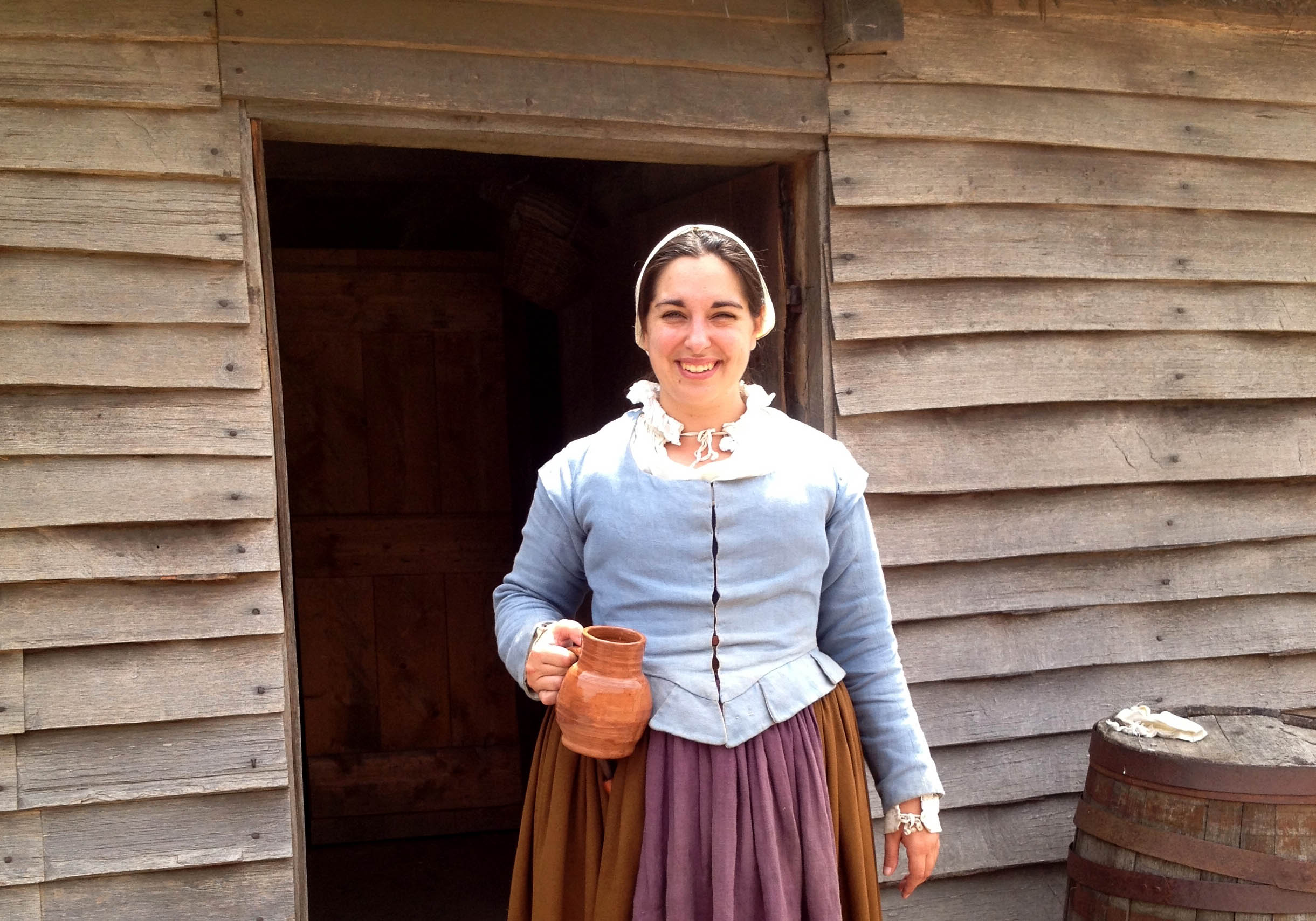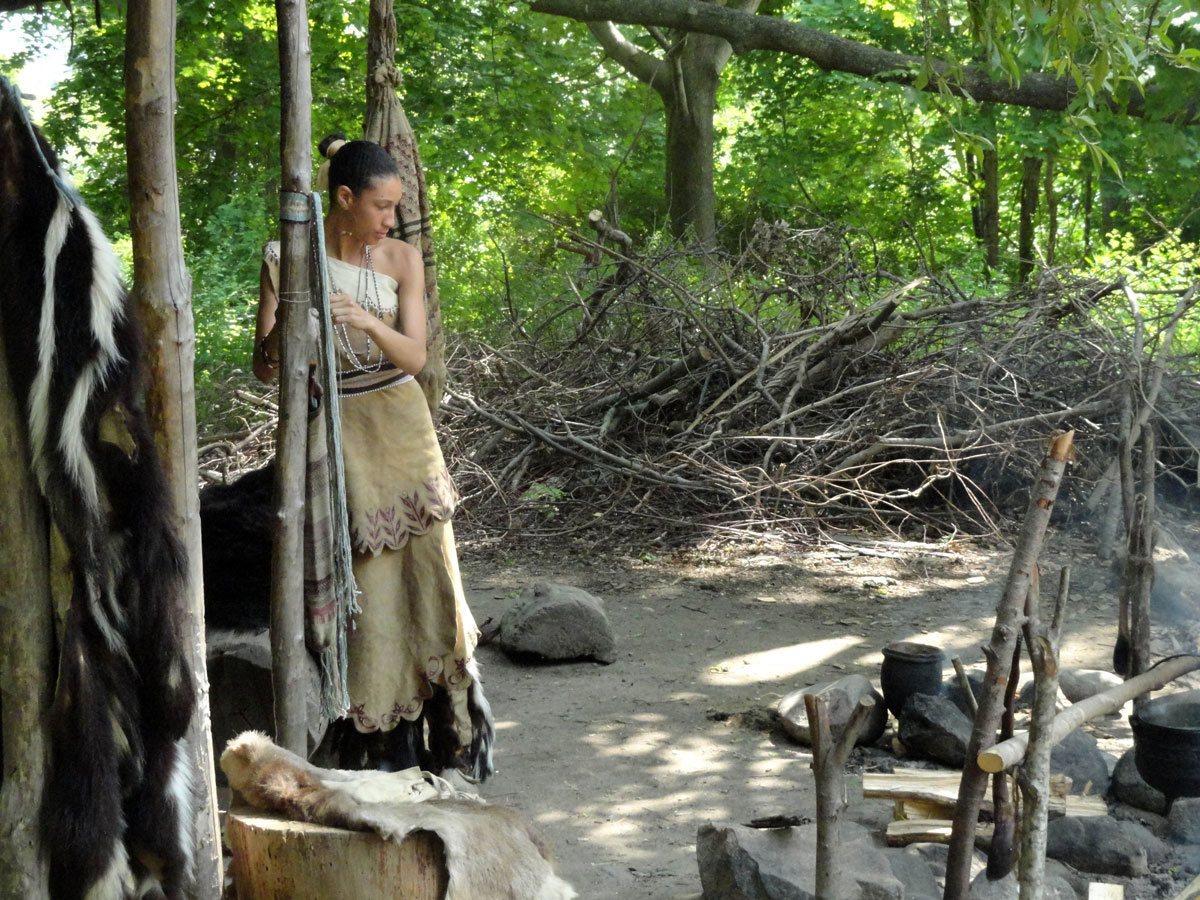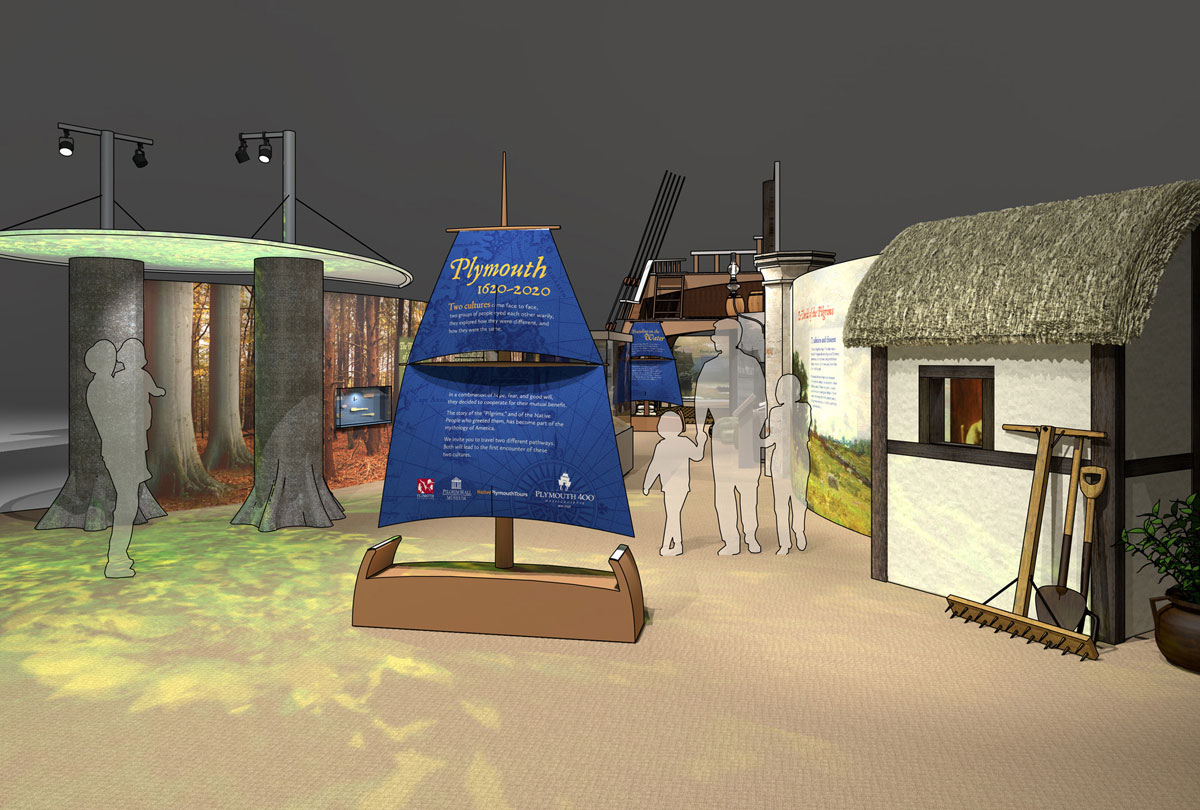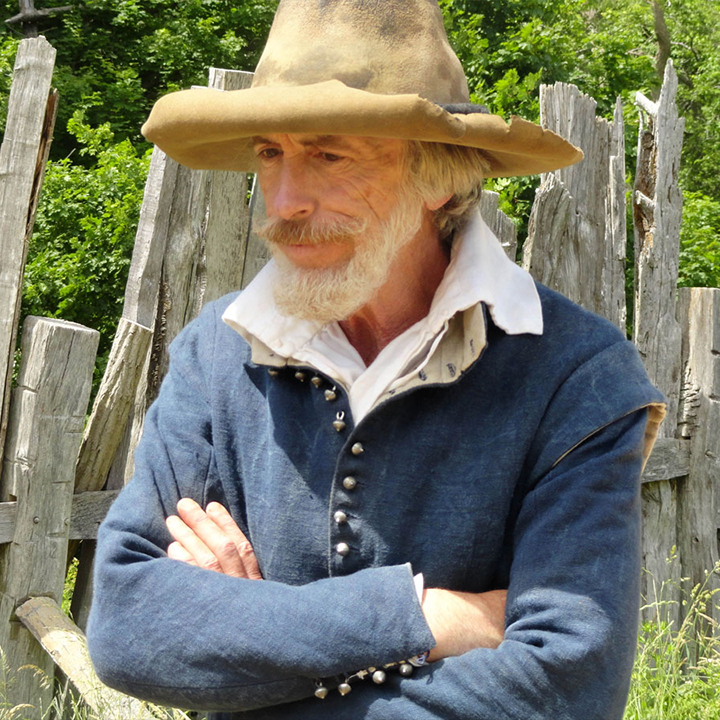Our English Visitors Explore Their History in America.
In breeches, doublet, and a wide-brimmed felt hat, Issac Allerton complained to his fellow countryman 388 years into the future, Leo Devine, Head of BBC South West, about his disappointment in the weather. After all, he stated in a thick 17th-century accent, “Eng-land is an’ a high-yar la-attitude, so why aren’t way warmer? We ah’ on the same la-attitude as Madrid”. Our man from the BBC was treated to this and other concerns, such as planting corn. Sure, they have corn in England, but you do not need a dead fish to fertilize it.
It was a delightful encounter, the English visiting the “English”. Our present-day English visitors were from Mayflower 400, a United Kingdom organization commemorating the crossing of the Mayflower. Along with Mr. Devine were Nicola Moyle, Arts and Heritage director and Nick Stimson, Playwright and Theatre Director; both from the City of Plymouth, UK. They were part of a larger contingent working with our client Plymouth 400, Inc. to build transatlantic excitement for the upcoming anniversary of the arrival of 102 English colonists, later known as the Pilgrims, aboard the Mayflower. Content•Design has developed a 3,500 square foot (or 325 square meters) museum-quality traveling exhibit Plymouth 1620-2020 telling this story, and the colonists encounter with the existing inhabitants, the Wampanoag.
The historic role players at Plimoth Plantation are highly regarded the world over for the authenticity of their presentation. But this was a test, relating geographical and historic facts of the country they study for a living, England, with residents who just disembarked from that island the day before. Both Isaac Allerton and another role-player, his wife Fear Allerton, easily related to the places our visitors hailed from, whether it be Northampton or Plymouth.

Fear Allerton (née Brewster) demonstrated the grit of the early colonists through her description of her “travails” from England to Leiden, and back again, only to put to sea on a ship, the Paragon, that almost sank during a storm many days out at sea. It returned to England where she embarked again on the Patience, arriving in Plymouth in 1623.
Our visitors had different sort of experience at the Wampanoag village. There are no role players. Instead, the Wampanoag are simply practicing the life ways that have not changed in millennium. A lively conversation ensued with the interpreters providing insights into the world of the Wampanoag, This included a discussion of the Wampanoag wampum currently in the collection of the British Museum and the possibility of its return to the Wampanoag people. When creating a new wampum belt or necklace Wampanoag craftspeople only have Iroquois wampum for reference.

Next, we entered a wetu, a sapling pole, and birch bark summer residence. Our interpreter, Shirley, described the matriarchal structure of the Wampanoag society, and how both the men and women worked equally hard, contrary to the English colonists belief that the women did all the work. They learned how the wetu they were standing has an oval volume with the heat source located in the center. This created an excellent heat circulation system, even on the coldest days the interior of a wetu will measure 70 degrees Fahrenheit (or 21 degrees Celsius). The Wampanoag did not understand why the English placed their houses on the top of the hill in winter, where they felt the full force os a northeaster, rather than locate them in a valley where they will be projected.
Our friends from England learned how the contrasts between the two cultures created friction, and how it eventually led to war after 50 years. When departing Nick Stimson stated how much he enjoyed the visit and noted that they all were the “good English.” At this Shirley readily agreed, since they were all leaving the country.
Our exhibit Plymouth 1620-2020 parses these issues through a multi-modal visitor experience. Hands-on and digital interactives, film, and immersive environments are used to illuminate the origins of both Wampanoag and English culture, how they formed an alliance that lasted 50 years, and how these two cultures exist today in present-day Plymouth USA.



